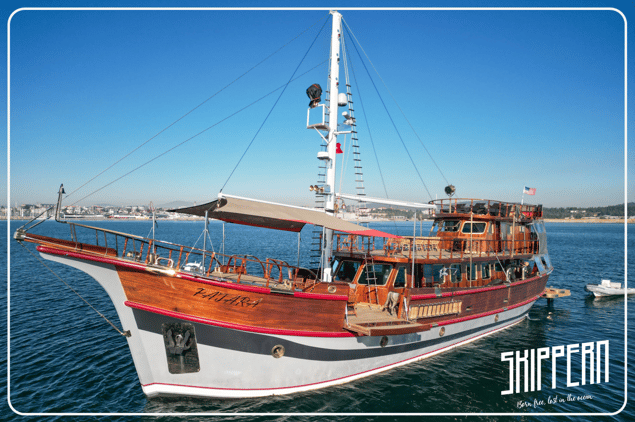
Explore how vintage vessel has been refitted and transformed into a modern and stylish ship
Technological Innovations Driving Successful Ship Conversions
The maritime industry has witnessed a remarkable transformation, with old ships being given new life through cutting-edge technology. This revitalization is not just about improving the aesthetics of these vessels; it involves integrating modern navigation systems, upgrading propulsion mechanisms to comply with current environmental regulations, and enhancing onboard systems for greater efficiency and safety. Such conversions are complex engineering feats, requiring meticulous planning, a deep understanding of maritime architecture, and a commitment to sustainability.
One significant aspect of these conversions is the adoption of greener technologies, such as solar panels and advanced battery systems, facilitating a reduction in carbon emissions and operational costs. Furthermore, modern communication and surveillance equipment ensure that these revamped ships meet the latest standards for maritime operations, ensuring that they are both safe and competitive in today's market.
Quite a few of these conversions are taking place in Turkey. We have kept an eye on this industry over the last years and visited a number of yards.
A special story needs to be told from Tuzla outside of Istanbul. A number of aging yachts have been converted to diesel-electric propulsion, and also upgraded and refitted by Zero Emission Institute.
One of these boats is today's focus - The "Patara".
The Ferronavale ship is now hybrid-electric "Patara"
"Patara". Built in 1950 and totally refitted over the last 3 years, Patara is now ready for the world.

Image: Patara in "the old days"
Patara originates from Ferronavale yards in Italy. She is pure classic elegance and hyper modern machinery and equipment successfully combined in this beautiful and unique yacht. However, she needed a total refit and the new owner had a plan to modernize the drive line to state-of-the-art diesel electric parallel hybrid system.

Image: Here from the yard in Tuzla outside Istanbul in 2022, under refit.
The name “Patara” even reflects this, as Patara is the ancient name of Cappadocia in Turkey – commonly known for its spectacular views of nature and air ballons.
Patara is a prime example of successful ship conversion is the transformation of the Ferronavale, an old sailship, into the hybrid-electric vessel now known as 'Patara'. This conversion project was a testament to the refit industy in Turkey, blending historical charm with modern efficiency.
The ship's propulsion system was overhauled to a hybrid model, which pairs conventional diesel engines with electric motors, allowing for more flexible and fuel-efficient operations.
The retrofitting process also included the installation of advanced energy management systems to optimize the use of electric power and minimize environmental impact. 'Patara' now serves as a glowing example of how traditional ships can adapt to the demands of the 21st century while contributing to a more sustainable maritime industry.
Specs
- LENGTH / BEAM / DRAFT: 32.8M / 7M / 2.9M
- HULL MATERIAL: Wood
- ENGINES: Diesel + Electric (see below)
- MAX SPEED: 10 knots
- FLAG: Delaware (USA)
- CLASS: IRS class (TBD)
- LOCATION: Istanbul, Turkey
- GUEST CABINS: 1 double cabin (owner's cabin)
- CREW ACCOMMODATION: 2 cabins for 3 crew
Accommodation can be vastly extended as a whole level beneath the main deck is possible to turn into more cabins.
Patara has a parallel hybrid configuration;
- She is powered by twin MAN 210 hp diesels in combination with 2 x 80 kW Fischer Panda electric engines
- The engines are powered by 2 x 45i KVA hypermodern Fischer Panda generators
- Engines are supported by 600VDC/155kWh propulsion system, lithium batteries and a 30kW charge unit, 1500W inverter
All components tuned together by experts from Zero Emission Institute in Istanbul.

Image: The impressive and elegant helm position in Patara.
These are the characteristics of the dual engine system:
1) Diesel Propulsion System:
- Separate Usage: The diesel propulsion system can be used independently.
- Request-Based: If needed, the boat can operate solely using the diesel propulsion system.
- Key Characteristics: It provides direct mechanical power to propel the boat through the water.
2) Electrical System has two modes:
- 1st Mode (Full Electrical Mode):
- Battery-Powered: In this mode, the boat’s electrical motor runs exclusively on the battery bank.
- Quiet Cruising: The boat can cruise at a speed of 4-6 knots for up to 5 hours without any noise.
- 2nd Mode (Battery Bank + Generator):
- Combined Power: The generator supplements the battery bank.
- Extended Range: Using both the battery bank and the generator allows for a significantly higher cruising range, which depends on the capacity of the fuel tanks.
Overall, the parallel hybrid configuration in a yacht combines the power and range of an internal combustion engine with the efficiency and environmental benefits of an electric motor, offering a versatile and sustainable solution for yacht propulsion.
Link to the ad: Click here
Back to listings: Click here

